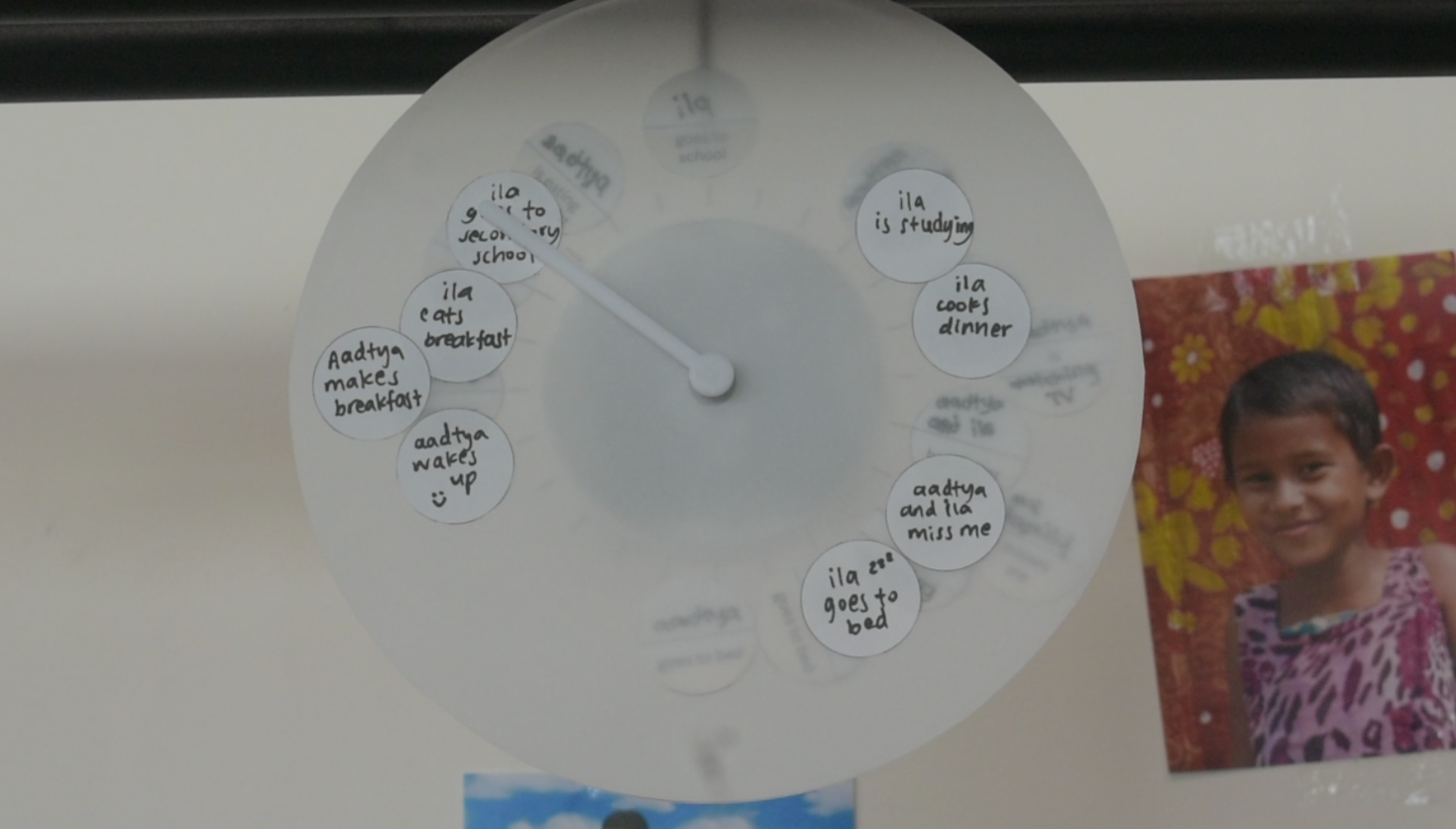Family Time Kit
Designing for Migrant Workers: Fathers, Husbands, and Sons
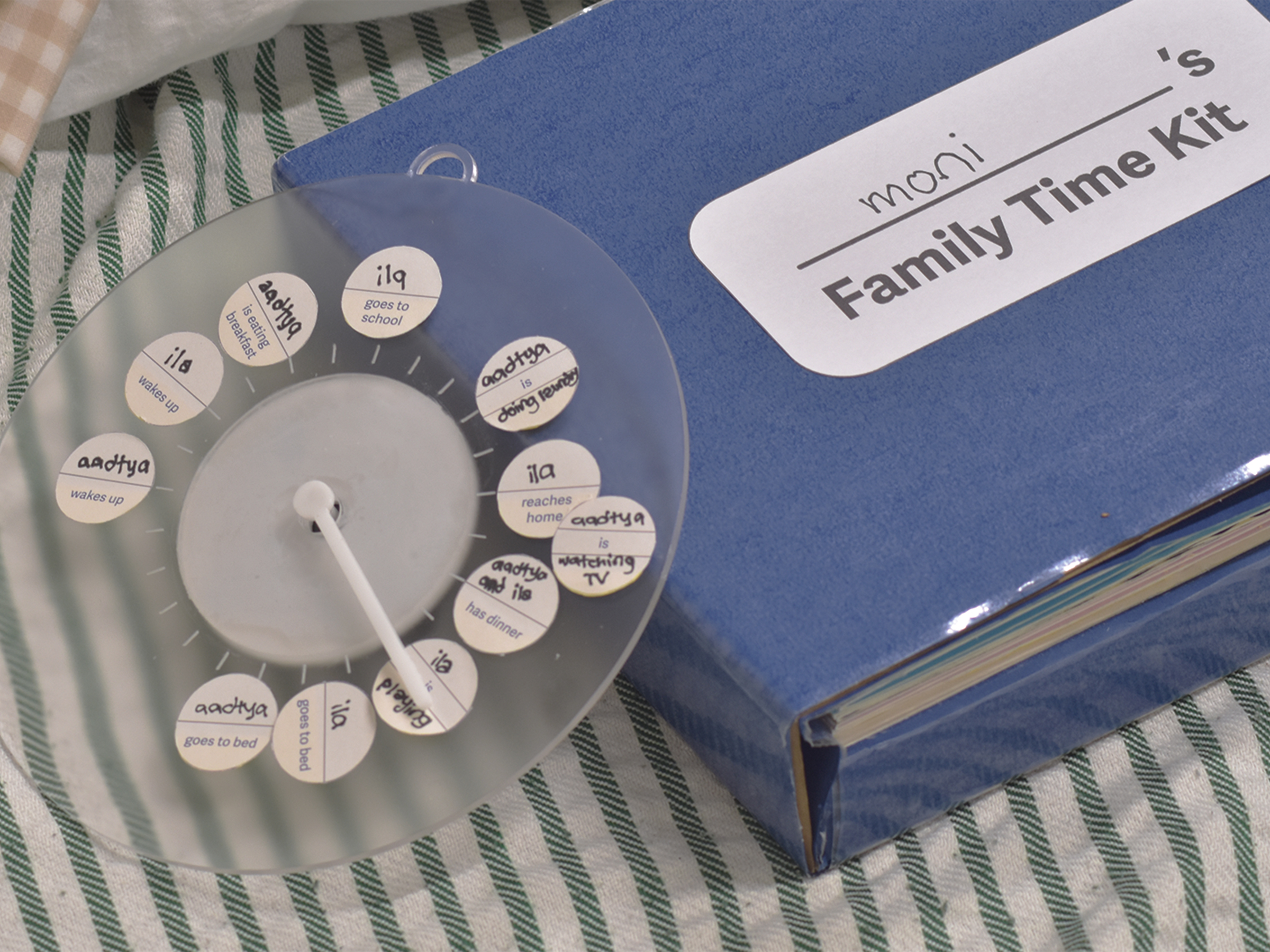
Service Design
Team Project, NUS DID, 2022
In collaboration with DASL
“Migrant workers are often only designed for through two lenses; the worker and the resident. What if we designed for them based on their own identities, not the ones we assign them?”
“Migrant workers are often only designed for through two lenses; the worker and the resident. What if we designed for them based on their own identities, not the ones we assign them?”
Research Process
Our team conducted interviews with core profiles of migrant workers who are parents and analogous parents who have also migrated from overseas to work here to gain insights on how they connect with their family despite the distance.
Our interviewees’ identities are confidential, hence insights and profiles will be shown without images.
Our interviewees’ identities are confidential, hence insights and profiles will be shown without images.



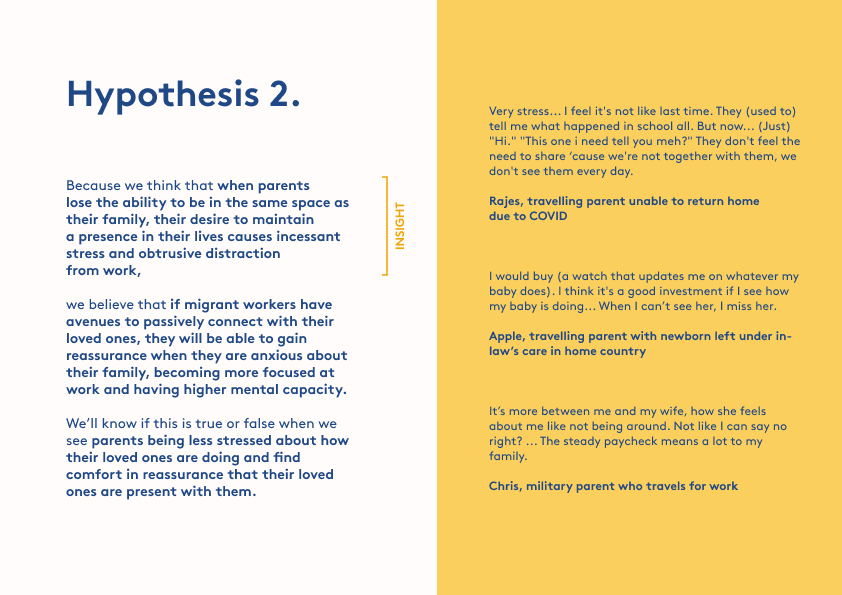

Ideation
We identified that hypothesis 1 and 2 had opportunities to design a personal and accessible way for migrant workers to connect with their families.

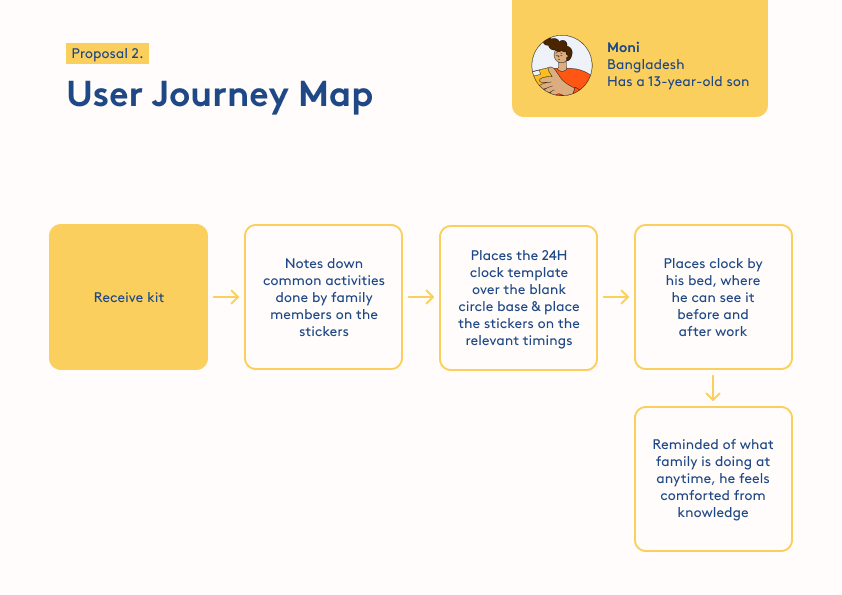
We aimed to design a clock that bridges the feeling of distance created by time differences between countries, specifically catering to fathers. The main design objective is to provide a thoughtful experience that fosters a sense of connection between workers and their families. We envisioned the clock becoming a meaningful and enjoyable addition to their personal spaces.
One of the challenges we encountered was shifting our focus beyond the final "completed" look of the clock and instead considering the experience of fathers as they fill up the activities. We recognized the potential for this process to become a meaningful period of time where fathers purposefully engage in an experience of reminiscing about their family's daily routines, ultimately prompting them to reach out and connect with their loved ones.
To ensure that the entire experience is reflective, thoughtful, and intimate, we devised a toolkit book that serves as a guide for fathers throughout the 24 hours of the clock. By using encouraging and positive vocabulary, we carefully crafted questions that direct fathers to fill in the routines and suggest activities they can engage in while completing the clock.
To ensure that the entire experience is reflective, thoughtful, and intimate, we devised a toolkit book that serves as a guide for fathers throughout the 24 hours of the clock. By using encouraging and positive vocabulary, we carefully crafted questions that direct fathers to fill in the routines and suggest activities they can engage in while completing the clock.




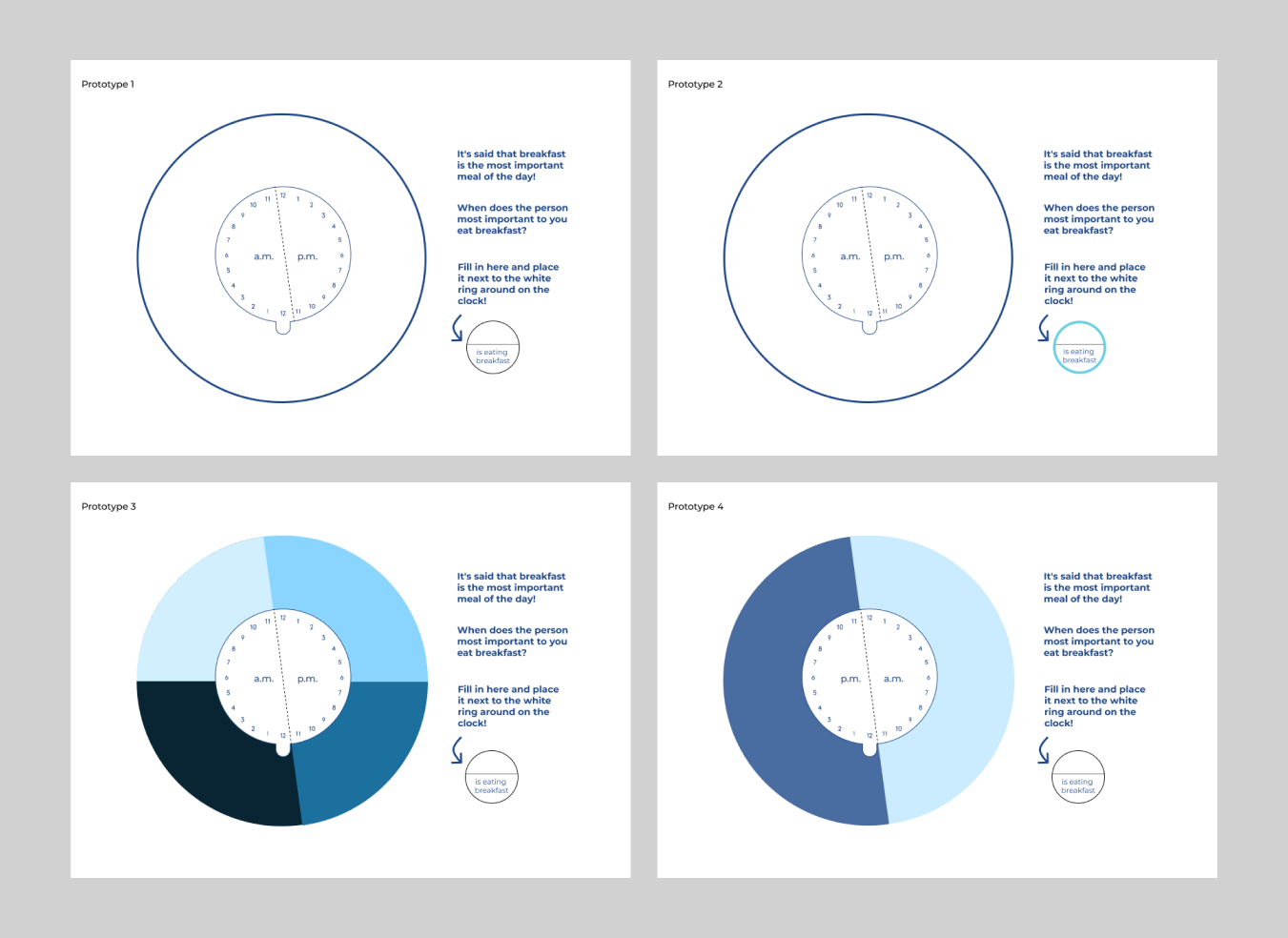
Insight
When seperated from their family, migrant workers seek a source of familiarity they can connect with to be affirmed by their family’s presence and maintain a sence of belonging in the unfamiliar environment.
Hypothesis
If migrant worker fathers can maintain routines when they first arrive, they would be able to reinforce their connection with their loved ones back home, enabling them to retain a sense of home even in an unfamiliar environment.
Final Concept
Family Time consists of a blank clock and setup guide. The interactive guide prompts migrant workers to reminisce and connect with their family as they fill in the clock. Their unique clock then newly represents the sentimental presence of their family, transforming their rest area in the dorm into a home away from home.





